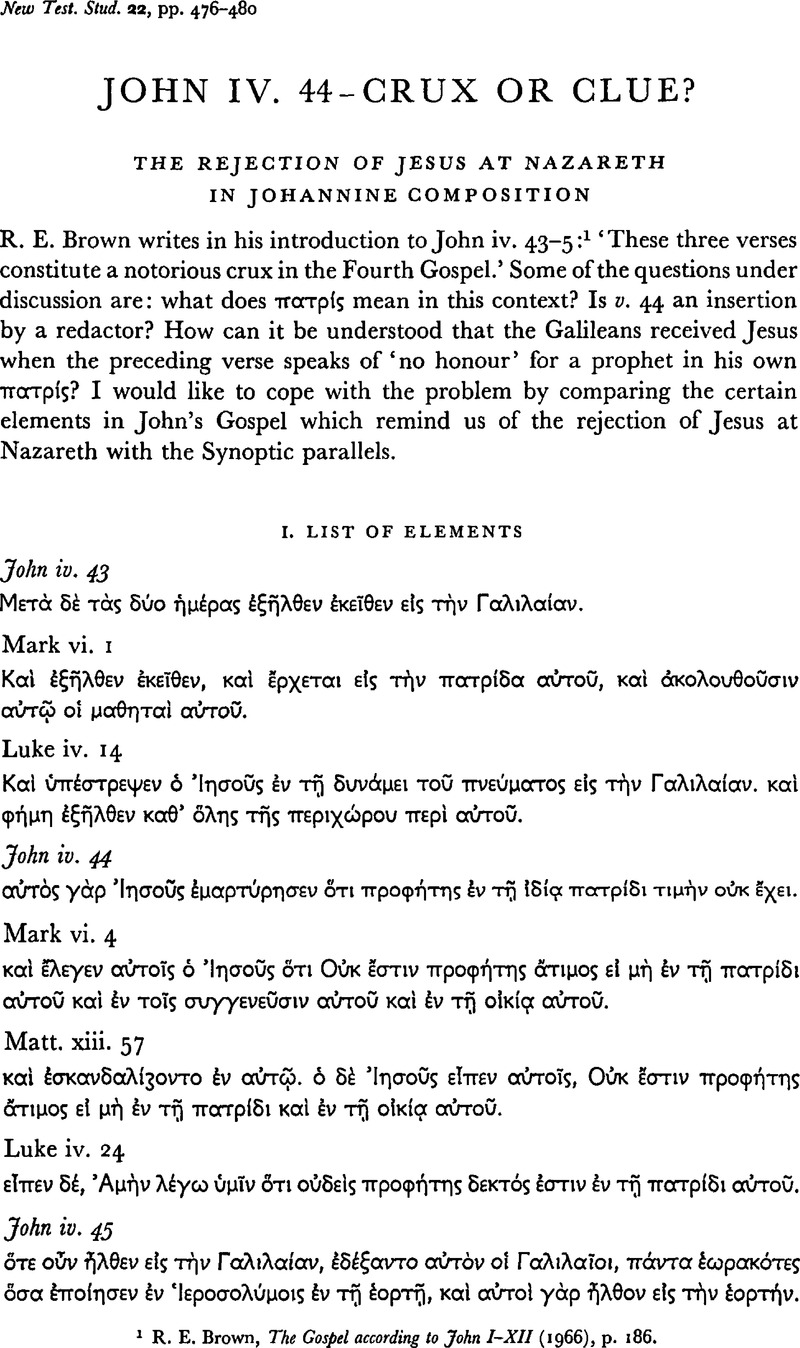Article contents
John IV. 44-Crux or Clue?
The Rejection of Jesus at Nazareth in Johannine Composition
Published online by Cambridge University Press: 05 February 2009
Abstract

- Type
- Short Studies
- Information
- Copyright
- Copyright © Cambridge University Press 1976
References
page 476 note 1 Brown, R. E., The Gospel according to John I–XII (1966), p. 186.Google Scholar
page 479 note 1 In my view, John has formed this verse on the ground of the saying in John iv. 44 in stylistic accordance with the preceding verse of the traditional Logos hymn.
page 480 note 1 As suggested in Reim, G., Studien zum alttestamentlichen Hintergrund des Johannesevangeliums (Society for New Testament Studies, Monograph Series 22), 1974, pp. 238 ff.Google Scholar, John composed his gospel in two stages: the first form (Erstform) was an enlarged Gospel of signs, consisting of traditional material from a signs source and Johannine speeches (plus ‘Sitz im Leben’). The form of the Gospel as it is now in our hands (Jetztform) came into existence when the Evangelist came into possession of a fourth Synoptic Gospel, containing passion and resurrection stories, too. John added this Gospel to his first form, thus causing some difficulties (i.e. insertion of ch. v from the fourth Synoptic between chs. iv and vi) for the understanding of the Jetztform of the Gospel. The story of the rejection of Jesus at Nazareth stems from the tradition of the ‘Gospel of signs’. With the exception of John, vi. 59Google Scholar and vi. 61, its elements are to be found only in the first form of the gospel. Originally, the traditional elements in John, vii. 40 ffGoogle Scholar. may have been connected with the rejection story.
- 1
- Cited by


